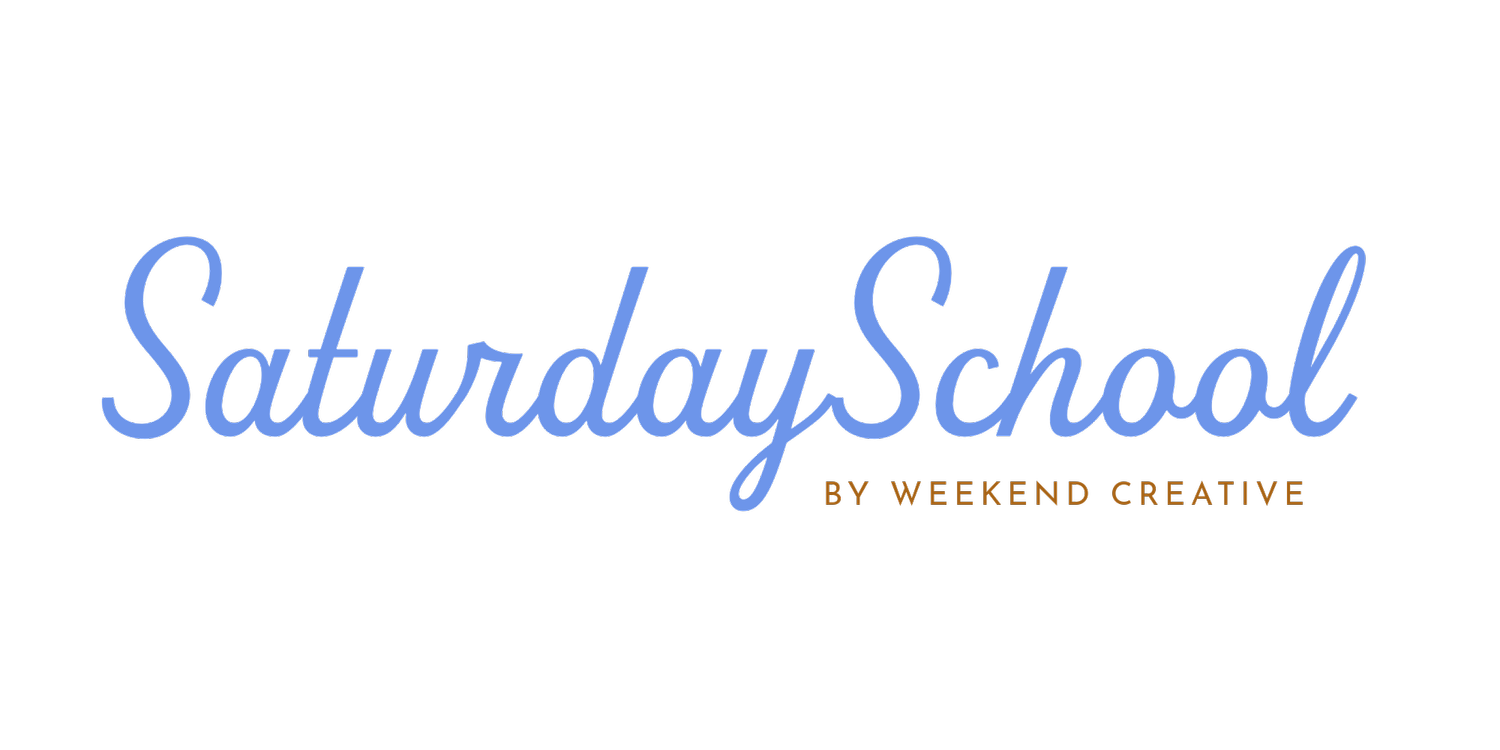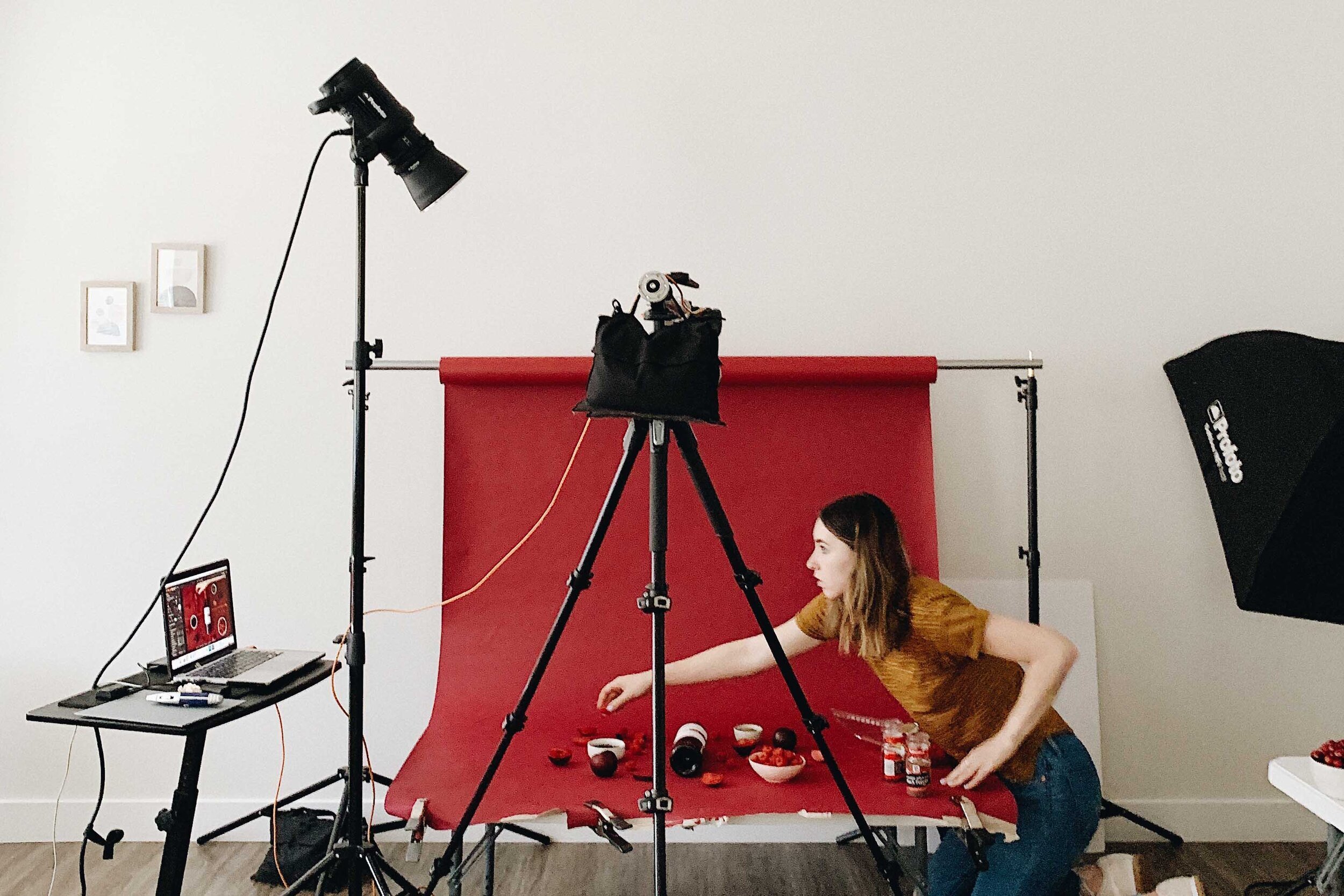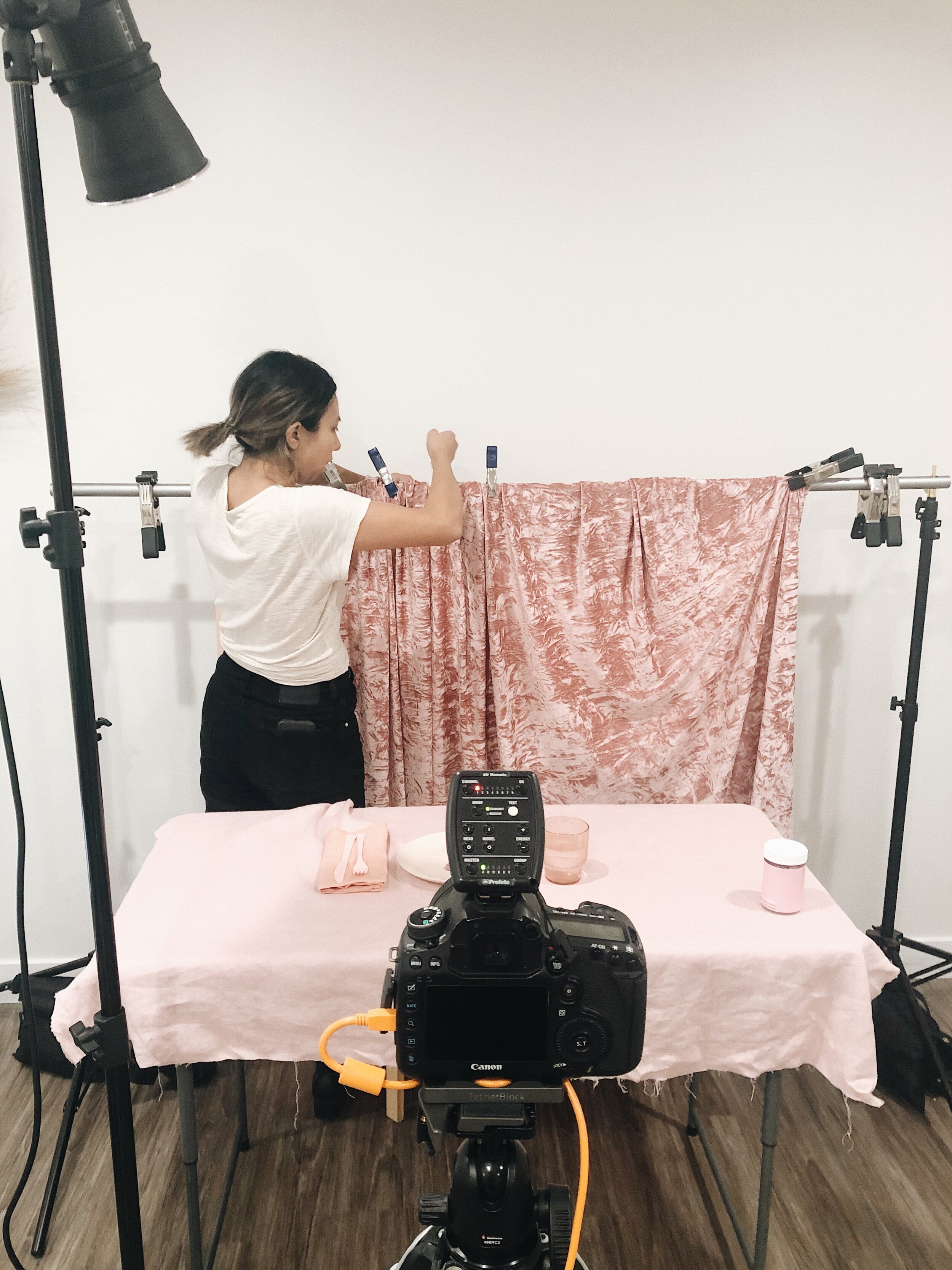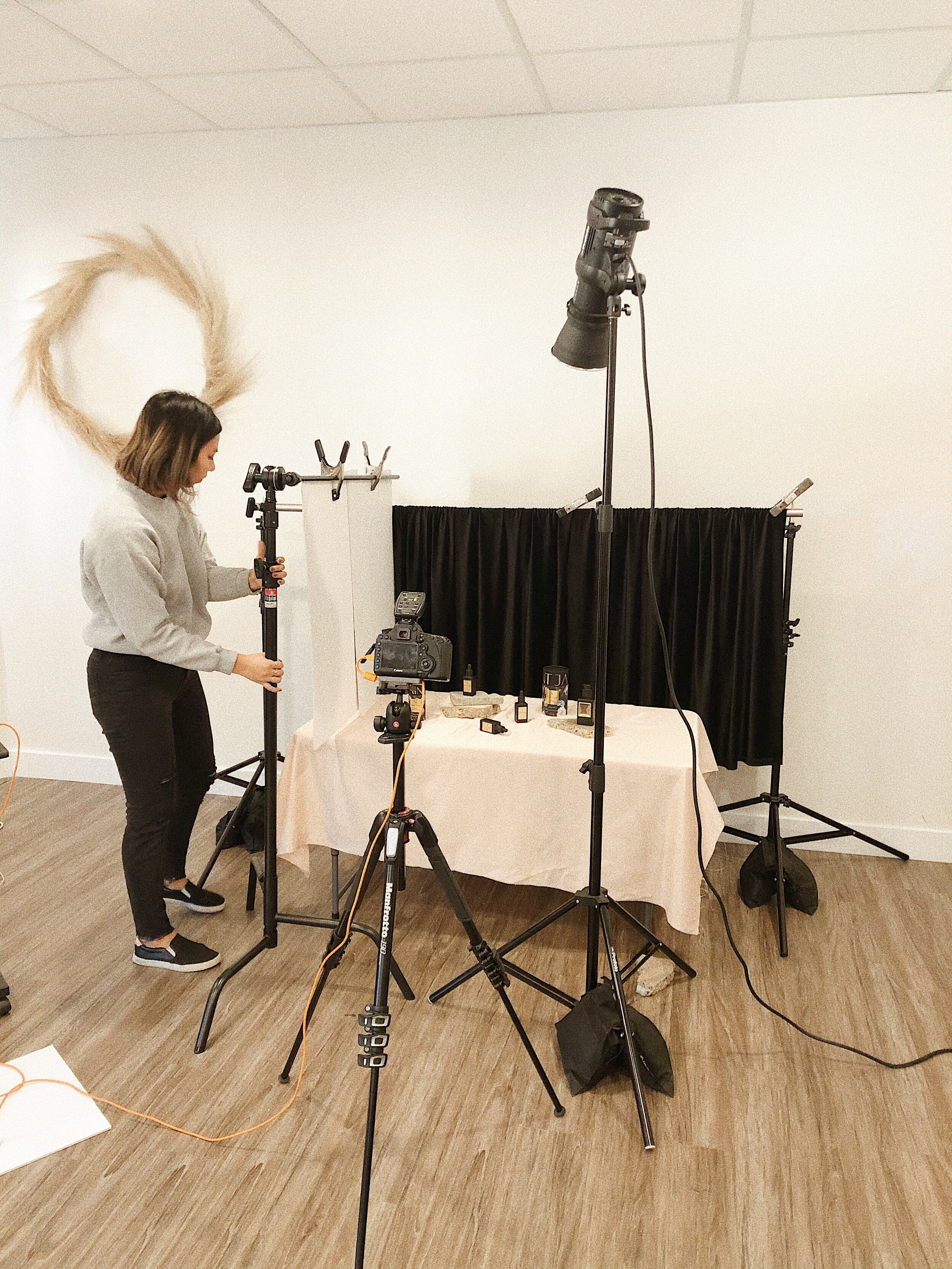Troubleshooting Tips for Product Photographers
When Elle and I first started working together, we were shooting almost entirely fashion editorials. We had absolutely no idea that we would eventually dive into the product and commercial photography world. Although working with models and fashion certainly presents its own set of challenges, we quickly realized that creative product photography was equally challenging in its own way.
There is so much more attention to detail when it comes to this type of work. How do we correctly light this product to create a certain mood? Is this a regular white background product shot or is this a product shot with more art direction and props involved? What’s the best way to make this product look suspended in the air? How do I keep this round product from rolling over? If I’m shooting in natural light, what time of the day will work best for this product? What’s the best way to create interesting shadows? Do we want a soft diffused look to the images or do we want a harsh shadow and contrasted look? Can I balance multiple props on top of one another?
These are just a few of the many questions we might be thinking about when coming up with concepts as well as during the actual shoot. This is exactly why having a mood board is extremely helpful in guiding all of your shots and the overall aesthetic of the shoot to keep it cohesive. Read our post on creating mood boards here and make sure to download our free template.
Product photography can be difficult. There’s no doubt about it. We’ve been doing this thing for almost two years and there is still so much we feel we don’t know. Yet, with every shoot we’ve been able to find solutions to our problems and discover new ways to execute an idea. My point is, you should always be learning to troubleshoot.
When I first thought about writing this post, I thought I would do a little bit of research to find out if any other commercial or product photographers had some tips or recommendations for troubleshooting. To my surprise, I didn’t really find a whole lot. Most articles had very technical troubleshooting tips that related to your camera, equipment, and set up and not much that was specific to creative product photography and prop styling.
It was also very interesting to me that neither of the articles talked about what type of mindset to have when troubleshooting. Seeing as I couldn’t find something related to what I was thinking, I felt even more compelled to write this post. Keep reading below to find out our favorite troubleshooting tips that have worked for us. Some of these recommendations are things we are currently implementing with every shoot or hope to keep working on moving forward.
Expect the Unexpected
Something we’ve learned from every single shoot is the simple truth that things WILL go wrong and you have to be ok with that. I know this may sound a bit pessimistic but let’s get real here. How will any of us learn anything if something doesn’t go the way we expect it to? There isn’t one shoot that I can remember where everything went perfectly smooth. It’s in our nature as humans to want to have everything go according to plan but sometimes we have to make room for hiccups and random surprises.
As creative product photographers, most of our photoshoots can get a little complicated. Each image can have a unique set, various props, and an entirely different lighting set up. You want to be sure that you’re giving each image an adequate amount of time to set up, test the lighting, and take the shot. So how do you prepare for potential troubleshooting? You build in additional time for just about everything.
It’s always better to have extra time than to feel rushed. There’s nothing worse than feeling behind during a shoot. By adding extra time to every shot, you can be sure that you also leave room for the good kind of accidents. The kind of accidents that happen spontaneously and end up being some of your favorite images. Next time you have a shoot, go at it with a realistic mindset that some things will probably go wrong. Therefore, make sure you build additional time for troubleshooting and happy little accidents (thanks Bob Ross).
Testing 1, 2, 3
This next troubleshooting tip is something we’re currently working on trying to do more of and that is testing concepts before the actual shoot. In the commercial photography world, there’s a good chance the client would like to be at the shoot to oversee everything. Like I mentioned before, it’s great to have a thorough plan so that everything runs as smoothly as possible but we know for a fact that things can and will go wrong.
\Therefore, we highly encourage everyone to test as much as you can beforehand for the sake of being efficient and not looking like a hot mess on the day of the shoot if a client is on site. By testing out your concepts beforehand, you can take care of some of that troubleshooting that could potentially occur when the real shoot happens.
Aside from testing concepts beforehand, we also recommend planning smaller fun shoots that are not client-related at all. Build these fun shoots into your schedule throughout the year and make it happen. These practice shoots are the perfect opportunity to test out lighting, set ideas, and concepts to better your craft and help build your portfolio.
Know When to Revisit or Let It Go
This tip is major and something I think we’ve all dealt with at some point as creatives. You have this really amazing idea in your head. And then when the time comes, the execution is not at all what you envisioned. Of course this moment can be super disappointing and frustrating but you can’t let that ruin your whole shoot. It can be hard to let go of an idea that you put a lot of thought and effort into creating. So that’s where this tip comes in handy.
Having a healthy mindset when it comes to troubleshooting means you’ll know when to revisit an idea or completely let it go. If something isn’t working, acknowledge the problem first, and then shift your focus to finding solutions. The last thing you want is to start feeding negative emotions into your brain which could actually block potential solutions. Try changing your language from “I don’t think this is going to work…” to “what if I try…” Sometimes all it takes is a simple change of perspective.
As I mentioned previously, building additional time into the shoot allows you to have some flexibility. If one particular idea or shot is just not working, move on to the next one and come back to it later with a fresh pair of eyes. If the idea still doesn’t work, you’ll know when it’s time to let it go. Just to be clear, walking away from an idea is not failure. It’s just a way of discovering what doesn’t work. As an additional tip, always have backup ideas in case this type of situation arises.
It’s ok to run into issues during shoots. It’s inevitable. But it’s the way that you approach each problem that helps you grow. Having a healthy mindset during a shoot and towards troubleshooting can make all the difference in the world. So I’ll leave you with this: Embrace the idea that things might not go as planned, test lighting or concepts beforehand when possible, and lastly, know when to let an idea go. Hope these troubleshooting tips were helpful. Let us know if you have any recommendations of your own that we should know about. :)
Is it the weekend yet?
Arabela





